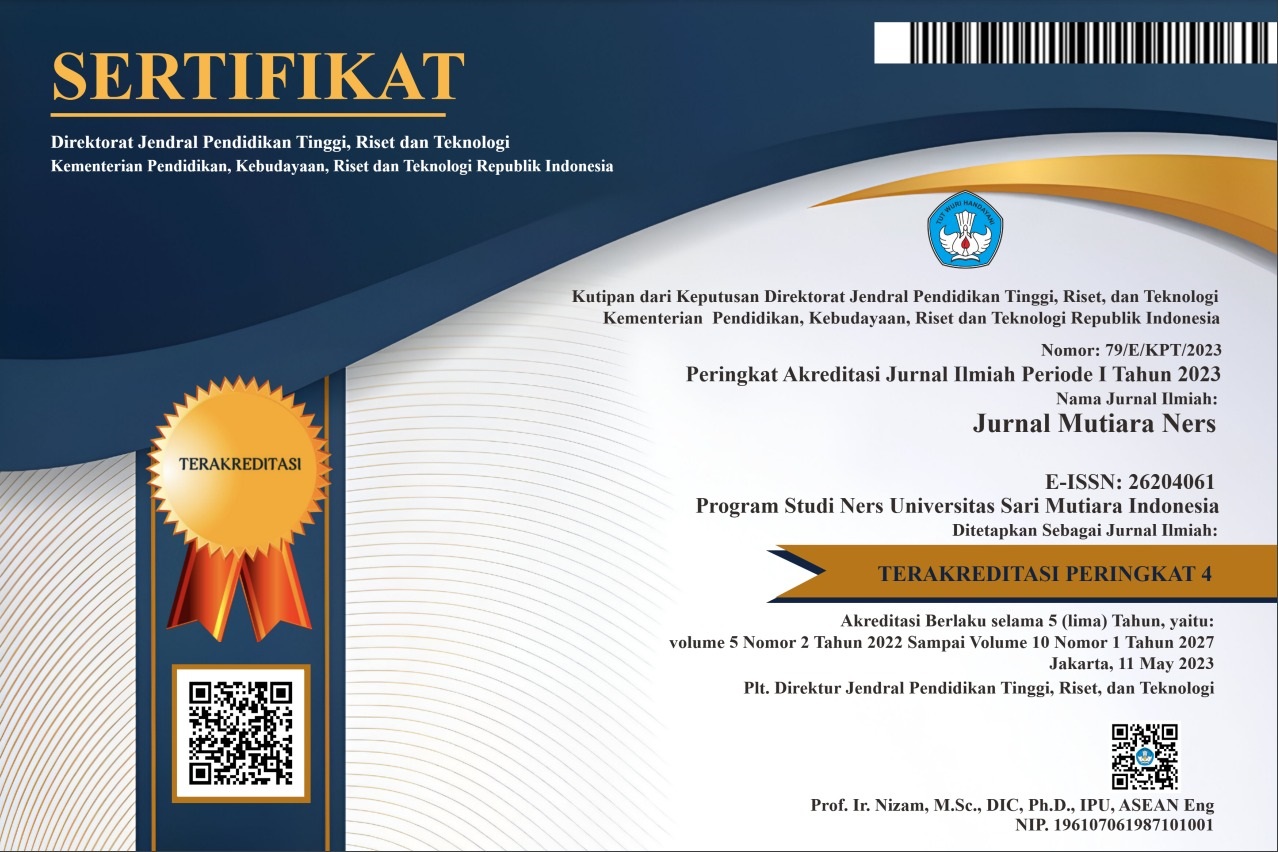PENGARUH LATIHAN FLEKSI WILLIAM TERHADAP TINGKAT NYERI PUNGGUNG BAWAH PADA PERAWAT PELAKSANA DI RSU HAJI MEDAN TAHUN 2017
Keywords:
Willam Flexion, Pain Scale, Lower Back Pain, NurseAbstract
Low Back Pain (LBP) is the most common musculoskeletal problem and it is currently the most widespread problem affecting the human population. William's flexion exercise is an exercise therapy for low back pain sufferers developed by Dr. Paul William in 1937 by strengthening abdominal and gluteus maximus muscles and extending the back extensor muscles. The purpose of this study is to identify generally the effect of William's flexion exercises on the level of low back pain in nurses in Haji general hospital Medan. This research was quantitative study using a quasi-experimental design that is provide treatment or intervention on research subjects then the treatment effect is measured and analyzed (Polit & Beck, 2012). The type of quasi-experimental design used was one group pretest-posttest only design. Results of analysis of normality test with analytical methods namely Shapiro-Wilk Test showed that the intervention group's pain scale was normally distributed (p> 0.05) and also used a descriptive method so that the data were analyzed using parametric tests namely the Independent t-test to test the average difference between 2 groups and paired t-test to test the difference in average pain scale before and after the intervention. The conclusion of William's flexion training research provides benefits in reducing low back pain in nurses at Haji general hospital Medan, it can be seen in the following conclusions: (1) pain scale before doing William flexion in the intervention group respondents showed an average of 3.82 (moderate pain scale); (2) Pain scale after doing William flexion in the intervention group respondents showed an average of 2.59 (mild pain scale); and (3) there was difference in pain scale before and after the intervention of William flexion in the intervention group, where the pain scale before showing moderate pain and after flexion showing mild pain scale.


.png)






